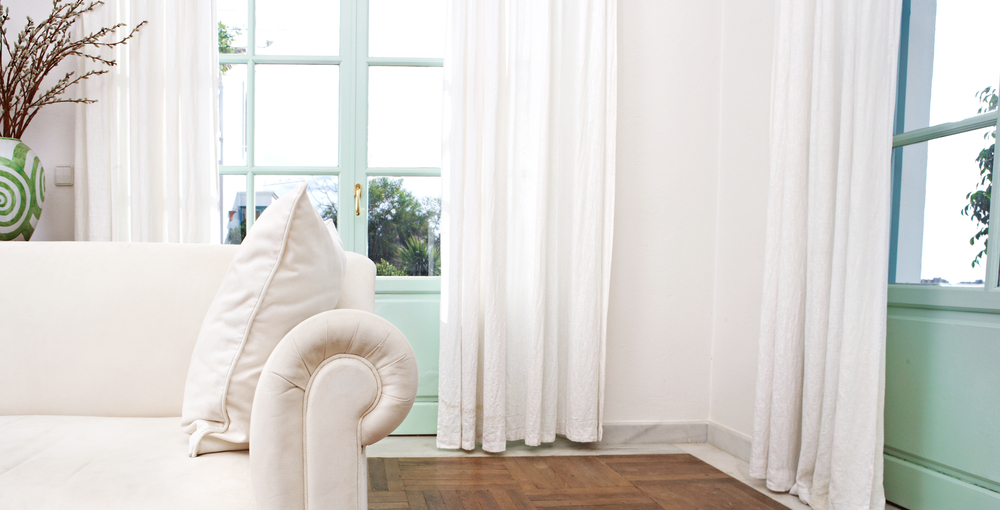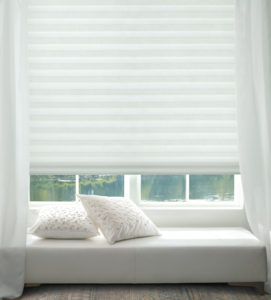
Blinds vs. Shades: What’s The Difference?
When it comes to window treatments, there are so many options that it can be overwhelming to choose what’s right for your home. Window coverings are used for privacy, light control, energy savings, and style. Blinds and shades are the most common types of window coverings, and they’re an essential part of any room because they help regulate the light, air, and energy of the room. While blinds and shades are both window coverings, they have very different qualities. So, what’s the difference between blinds and shades? Read on to find out!

Blinds
Blinds are hard window coverings with slats–or louvers–made of metal, wood, vinyl, bamboo, or composite that can be easily adjusted for light control and privacy. Though most blinds aren’t available in styles that are safe for kids and pets because of the cords, there are cordless or motorized lift options. Not only are blinds affordable, durable, and practical, but they also offer more light control options than window shades.
Because they block out light very effectively, blinds are a great choice for the bedroom or nursery. Blinds are available in a wide range of colors, textures, slat sizes, and materials such as wood, aluminum, and faux wood. Adding sheer curtains or a valance softens their rigid appearance, giving your room a more comfortable tone.
While blinds with horizontal louvers are most common, there are also blinds with hanging vertical slats. These types of blinds are typically used on sliding patio doors or over large sliding windows. Standard depths for blind slats are 1/2-inch or 1-inch, which are called mini blinds, or 2-inch, which are known as Venetian blinds. As far as installation and sizing goes, the length and width of the blinds are sized to fit within the window frame.
Shades
Traditional window shades are soft window coverings composed of one continuous panel of fabric. To let in light or have a view, you need to raise the shade, using either a cord, roller, or lifting mechanism. As the shade lifts, it either bunches or rolls around a rod, depending on the shade’s style. While window shades don’t have slats to adjust, you can select the opacity of the fabric or liner to fit your needs.
Shades come in a range of colors and opacities for light filtering, but room darkening shades can be added behind many of the more translucent styles. In the living room, a light-filtering fabric will allow natural light to come through even when the shade is closed. The most popular shades are cellular shades, roman shades, and roller shades:
- Roman shades. Luxe fabrics and handcrafted pleats lend to the signature old-world details of roman shades. These shades pull up into deep pleats, offering a soft classic look to your home.
- Roller shades. These shades regulate natural light and privacy in your home, cutting down on glare and catching up on sleep. Roller shades are inexpensive, and the material rolls around the top roller.
- Cellular shades. Cellular shades are specially designed with fabric air pockets that trap air to insulate your windows and improve temperature control.
If you want your windows to make a statement rather than blend into the background, you may consider choosing colorful or texture shades, or classic blinds. With countless styles available, you can find a window shade to complement any decorating theme, from casual to formal. As with curtains, you can use shades to add a pop of color, patterning, or texture to your home.
While blinds and shades can meet different needs, you will find that a full range of styles and functionality can be found particularly within Hunter Douglas’ shade variations. There is a lot to consider before purchasing custom window treatments, but we’re here to help! Contact us today for more information on how we can help you.

